|
In Town Tonight
Following a rearrangement of my busy social diary and the early retirement, with prejudice, of the keeper of said diary here at Ripster Hall – officially titled my Remembrancer – I was able to attend the launch party for Martina Cole’s new bestseller No Mercy in London’s bustling Mayfair.
It was, as usual, a joyous affair with a sparkling mixture of personalities from the world of crime writing, publishing, journalism, entertainment, music, film and television, although my official photographer manged to catch Martina, myself, international yachtsman Michael Dillon and a distracted Cathi Unsworth in a rare moment of serious contemplation.
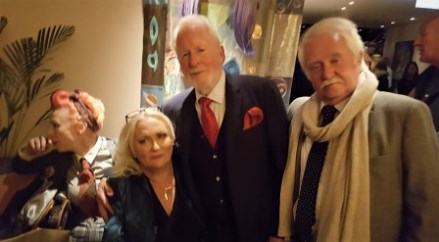
As a souvenir of a splendid evening I received an autographed edition of the new This Is Essex: Extraordinary People calendar produced by Visit Essex, the county’s tourist authority. The calendar celebrates, as it says it will, the achievements of some of Essex’s highest-flying personalities – one per calendar month. It is only fitting that Essex-born Martina, surely the county’s most successful crime writer, should take pride of place as, so to speak, ‘Miss January 2020’.
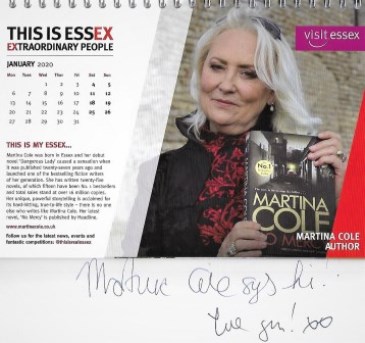
For a less restrained account of the launch of No Mercy, see the report by Ali Karim on shotsmag confidential.
Sadly, I was unable to attend the launch of Peter Murphy’s new book Judge Walden – Call the Next Case, published by No Exit, at the Law Society, for I often stood shoulder-to-shoulder with Peter at author events in Heffer’s in Cambridge in the distant past when I used to get invited.
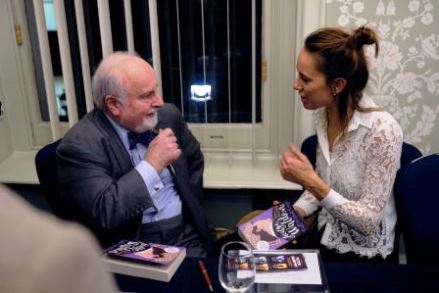
Not that Peter Murphy needed my support, for his new book, featuring five cases for Charlie Walden, the resident judge of Bermondsey Crown Court, has a remarkable defence team (if that’s the correct legal term, your honour) comprising television’s Judge (Rob) Rinder and Baroness Hale, the president of the Supreme Court – and just the sort of ‘girly swot’ our Prime Minister should be wary of.
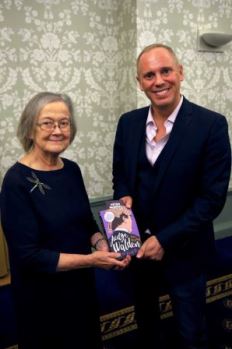
Those two rather famous legal eagles were not at the launch for show. Both contribute forewords to Peter’s book, Baroness Hale calling Judge Walden ‘surely the next Rumpole’ and Judge Rinder declaring the book ‘impossible to put down’ – so much so, he admits, that he walked into a train door whilst reading it! (Now there’s a claim for damages if ever I heard one…If only there was a decent lawyer in the house…)
Old MacDonald
Once again I am indebted to Jeff Popple, one of my Southern Hemisphere correspondents, who has supplied me with a copy of a rare Philip MacDonald short story as published in the Australian edition of Ellery Queen’s Mystery Magazine for January 1950.
The story, The Wood for the Trees, features MacDonald’s famous ‘Golden Age’ detective Colonel Anthony Gethryn and though written after MacDonald had lived and worked in Hollywood for twenty years, clearly harks back to the England of that era. Multiple brutal random murders of women - ‘mad murders’ as they were called rather than the modern term ‘serial killings’ – have struck the village of Friars’ Wick in the county of Downshire and, of course, the local police are baffled. Fortunately Gethryn is on an errand to the place, calling at a large country house where, naturally, a house party is in progress inside and a torrential rainstorm outside.
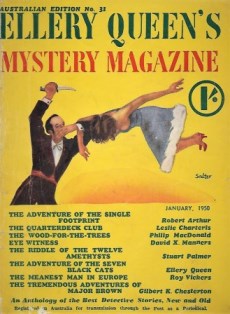
It’s the sort of setting where a butler is described as a black-coated discretion and a female house guest is a silent brooding Norn; the gathering is described as a galère by one guest and another is given bad news by a servant whose expression was a curious blend of horrified dismay and cassandrine pleasure.
Does the village of Friars’ Wick have a ‘Ripper Redivivus’ on its hands or is there a twisted logic to the killings? Fortunately Gethryn is on hand to solve the case, and it is the type of case he has some experience of, or rather his creator does as Philip MacDonald was writing experimental thrillers featuring serial killers back in 1933, slap bang in the ‘Golden Age’.
In My Great and Unmatched Wisdom
I have, in my time, come across some weird and wonderful titles of crime novels, not the least among them being Counter Paradise by Nichol Fleming (nephew of Ian) and Wycliffe and the Three-Toed Pussy by W.J. Burley, not to mention numerous Biggles books far too rude to mention in a family column. Whilst idly flipping through The Hooded Gunman, John Curran’s excellent history of Collins Crime Club, another oddity caught bleary eye: Twenty-Five Sanitary Inspectors by Roger East.
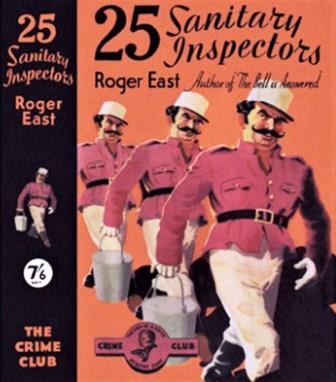
The pen name of Roger d’Este Burford (1904-1981), East was a poet, a screenwriter for British films, mostly musicals and crime dramas, and a crime writer with a penchant for exotic locations, as well as a British diplomat in Moscow during WWII. He was, reputedly, the only Crime Club author to set one of his novels in Venezuela, and the action of his 1935 novel 25 Sanitary Inspectors takes place on the island of San Rocca in the West Indies, which is all set to be developed as a millionaires’ playground. (Perhaps it gave Richard Branson the idea.) Fire, sabotage and murder seem to upset such plans but with no resident police force on the island, a team of – you’ve guessed it – sanitary inspectors are called upon to restore law and order.
I wonder if the charming Robert Thorogood, the creator of the television hit Murder in Paradise, ever considered that as a plot-line.
Guiding Light
It is a truth universally acknowledged that every known guide to crime fiction will have a personal favourite author missing. In an introductory note to Crime Fiction, A Reader’s Guide (Oldcastle Books) Barry Forshaw, author of numerous such guides, recognises this and admits that over the years people have relished pointing out to me who is missing.
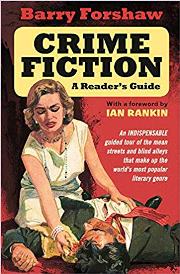
One reader has already relished the fact, so much so that Barry has actually included (as Appendix 4) a list of omissions provided by Jeff Kingston Pierce, the editor of that informative and exhaustive blog www.therapsheet.com, of more than 25 authors, including some big names in the field. {Rex Stout, Barry? Really?}
Naturally I would not stoop so low as to highlight such omissions. This is, after all, a guide not an encyclopaedia (sic) – Barry’s already done one of those – which usefully carves up the genre into easily identifiable sub-sets such as Golden Age, Hardboiled and Pulp, Psychopaths and serial Killers, and so on.
For the uninitiated, the choice of books and authors may well appear daunting. The hardened lovers of the genre will find, in the main, little to argue with when it comes to which author goes in which sub-set, although there will be personal preferences when it comes to which book best shows off that author’s skill. For example, the late great Reginald Hill is represented by The Death of Dalziel rather than Underworld or On Beulah Height, but that’s just my personal choice, as is the advice to overlook Appendix 1 on Scandinavian crime fiction.
There is much to inform and entertain here with, as one might expect from film-buff Barry, lots of added-value nuggets on films based on crime novels and there are a few surprises. Well, I was certainly surprised to find that three of my crime novels are worthy of mention as opposed to one by Reginald Hill and none by Robert Barnard, Margaret Maron, Rennie Airth, Walter Satterthwait…but no, I said I wouldn’t.
City on a Hill
When I discovered that there was a new television drama entitled City on a Hill set in Boston in those United States, I automatically assumed it was based on the excellent 1975 political novel by that crime-writing genius, the late George V. Higgins.
 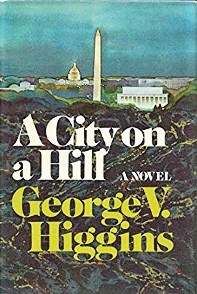
It isn’t, but it is very good; a violent, foul-mouthed crime drama set in a corrupt and racist Boston in the 1990s, with a splendid performance by Kevin Bacon as a rogue FBI agent who has a ‘mobile’ phone the size of a house brick, which brought back many memories. The plotting is intricate and the writing so good, it could have been by George V. Higgins, with characters regularly musing philosophically about good and evil and quoting Lincoln Steffens (Google that if you have to).
In fact it is so good, I have placed it as my second televisual priority of the month, just behind the return of the excellent French series Spiral now back on BBC4.
Remembering Parker
I once had the pleasure of meeting the late Robert B. Parker (1932-2010) in the legendary Murder One bookshop when he was on a rare visit to London. After considerable chat about book stuff, I invited him to join me for a proper British beer rather than the bottled Amstel his famous private eye Spenser seemed to think everyone in Europe drank. He declined on the grounds that his wife Joan was out shopping and had told him not to move from Murder One until she came to collect him.
I think, on very brief acquaintance, that he would have been incredibly proud of how his creation Spenser – the Boston private eye – was accepted (and has remained) into the pantheon of fictional detectives, and possibly quite surprised that his subsidiary characters, if I may call them that, from his other series, Jesse Stone and female P.I. Sunny Randall (once cruelly described as ‘Spenser in a dress’) have also had a life beyond their creator.
In fact, all three of Robert Parker’s creations get the ‘continuation’ treatment in 2020, with new novels all from publisher No Exit. Sunny Randall appears in Blood Feud by Mike Lupica; Jesse Stone takes centre stage in The Bitterest Pill by Reed Farrell Coleman; and Spenser himself appears in another new novel, Angel Eyes, by Ace Atkins.
Eagles and a Zebra in a Cook book
I have not, since the death of my friend and master cruciverbalist Colin Dexter, attempted to compose a cryptic crossword clue, though that does sound rather like one. Anyone of a certain age, however, will immediately connect (Where) Eagles (Dare) and (Ice Station) Zebra to one of the most popular thriller-writers of the 20th century, Alistair MacLean. The reference to a ‘Cook’ book may puzzle some and surprise others.
In anticipation of MacLean’s centenary in 2022, publisher HarperCollins is reissuing his backlist in new paperback jackets, the first tranche of them already out, with rest to follow next year.
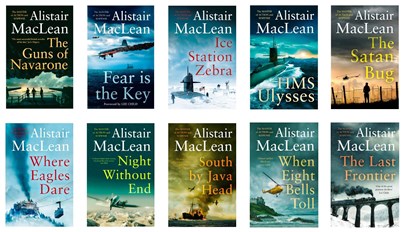
MacLean’s thrillers topped the international best-seller charts for more than thirty years, from 1955 to his death in 1987, many of them (perhaps the majority) being filmed, and all going through multiple editions. Every male (it was usually males) of a certain age - okay, dammit, my age – had their favourite set of paperback covers. These were mine, from 1965, which made the MacLean ‘brand’ visible across even the largest bookshop.
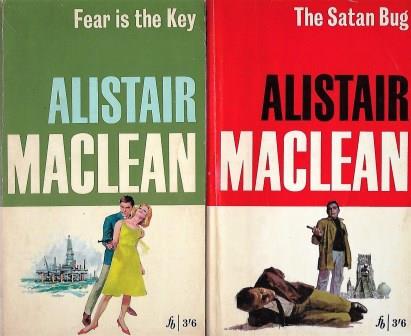
I had not realised until relatively recently that this series of covers – which ran, I think, for about three years – were really quite scarce these days and in a rare fit of philanthropy I donated several from my collection to those lovely people at the Collins Archive in Glasgow to fill gaps in their collection.
And the Cook book? Well, that may come as a surprise to some, but MacLean wrote a biography of Captain Cook back in 1973 and it will appear in paperback for the first time to mark his centenary.
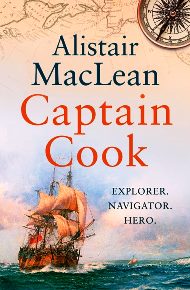
|
|
Books of the Month
So many good books have been published in late October and will be this month that it is difficult to choose in which order I should list them. I decided by holding a mini referendum among the staff here at Ripster Hall – for asking the people always works, doesn’t it? - and letting them decide the running order.
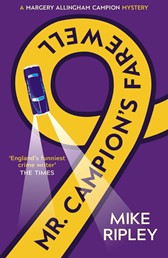
Appearing in mass-market paperback for the first time is Mr Campion’s Farewell, published by Black Thorn, the new and innovative imprint of Canongate. This was my first attempt at a ‘continuation’ of the works of Margery Allingham and her Golden Age sleuth Albert Campion and the ‘Farewell’ of the title is deliberately misleading as there have been five subsequent titles. Technically, I am the second Allingham continuation author as when Margery died in 1966, her husband, Youngman Carter, was persuaded to complete her last unfinished Campion adventure and then write two more. He had started an untitled third when he died in 1969, leaving only the opening chapters. It was that book which I completed, attempting to provide a respectful ‘farewell’ to a much-loved character. On that latter point, I’m afraid I lied, as Albert will return, yet again, in Mr Campion’s Séance next year.
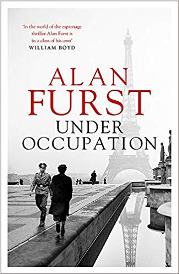
If any thriller writer has absolutely nailed a time and place in which to set his fiction, in this case France and Eastern Europe at the beginning of World War II, it is the American master of historical spy-fi Alan Furst. In Under Occupation (Weidenfeld), Furst is back on familiar territory: occupied Paris in 1942, and the French resistance beginning to flex its muscles (in more ways than one) under the direction of Allied spymasters in London.
Central to the action is small-time journalist Paul Ricard who turned to crime writing in 1934 with a detective novel ‘for the sophisticated reader who wanted more than a detective with a cold waiting for a train’ (I wonder who that could possibly be a reference to?). Troubled by the fact that he is not ‘doing his bit’ to resist the invaders, Ricard gets his chance when, by a fluke, he comes into possession of the top secret designs for a German torpedo and his new career as a spy is launched.
Alan Furst is a master of his chosen material and his writing is cool, calm and very collected and proves, yet again, that he is one of the truly great writers of espionage fiction.
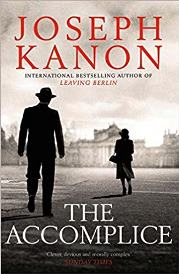
Another very fine American writer of historical spy thrillers and one who also mines the dark legacy of WWII is Joseph Kanon, whose new novel The Accomplice (Simon & Schuster), set in the early Sixties, charts the search for a Nazi war criminal, Otto Schramm, hiding in Buenos Aires.
The investigation is led by a junior CIA officer, the nephew of an Auschwitz survivor, and centres on the daughter of Otto Schramm, who he is convinced knows the whereabouts of her father. If the Nazi-hunt plot-line sounds a well-trodden one, fear not, for Kanon’s gift for expressive dialogue and spare prose keep up the pace and suspense to a thought-provoking conclusion.
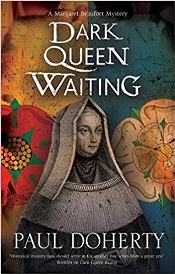
Do Lancastrians always pay their debts? Is Winter coming? The answers may well lay in Paul Doherty’s latest history-mystery Dark Queen Waiting published by Crème de la Crime, which proves that the Wars of the Roses, on which Game of Thrones was based (with added dragons), had more skulduggery, betrayal and unsavoury characters than any scriptwriter could have come up with.
Set in late 1471 – ‘a season of murder’ – the dark Queen in waiting is Margaret Beaufort, Countess of Richmond, supporter of the Welsh house of Tudor, who plots to put a Tudor on the throne (which probably isn’t made of iron). The plot involves a ‘Dragon Cypher’ and a Red Dragon Battle Group, which is where the mercenary Otto Ziegler, a former soldier turned gangster with a violent hatred of the Welsh may well come in useful. Although he would have been only three years old at the time, I would like to think that in Florence, Niccolò Machiavelli was taking notes, as the novel weaves in the unexplained disappearance of Lady Anne Neville and the deadly rivalry between the Yorkist brothers George and Richard, later Richard III, who is, perhaps unfairly, called ‘the usurper’. Plus, as usual, Doherty expertly adds historical colour in the sights and smells of medieval England. I was particularly taken with the description of The Hanging Tree pub on Dung Lane near London’s Queenhithe dock, an establishment I am pretty sure I have been asked to vacate before closing time.
Watch out also for a character called Christopher Urswicke, who could be said to have laid the historical foundations of the British secret service. This is history red in tooth and claw, described with verve and enthusiasm.
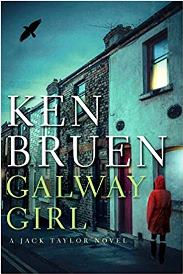
Galway Girl, published by Head of Zeus, could not have been written by anyone other than Ken Bruen. Who else could – or would dare – pepper a story of revenge and serial killing of Irish policemen (the Garda) with references to Ireland’s vote on legalising abortion, Gerard Manley Hopkins, crime writers Derek Raymond and Andrew Vachss (and noir references don’t get much noirier than that), a goal by Christian Ronaldo in the World Cup in Russia and philosophical musings such as: The only difference between a grave and a rut is the dimension.
Bruen tills the earth of his contemporary Irish setting, then sows the seeds of violent crimes and irrigates his crop with Spartan, poetic prose whose sprung rhythms reflect the meanderings of the mind of his tortured hero Jack Taylor. It sometimes comes across as surreal but is in fact cleverly observational and darkly funny. Nobody does it like Bruen.

In the intriguing opening scenes of Sorry for the Dead by Nicola Upson, published by Faber, crime writer and playwright Josephine Tey pops in to the Arts Theatre Cambridge, which is about to stage one of her plays, for a chat with the management and one of the theatre’s founding members, John Maynard Keynes. Whilst there she is made aware of headlines in the more salacious newspapers of the day (1938) which hinted at the involvement in a violent death in 1915 in Sussex of a well-known crime-writer whose latest novel (A Shilling for the Candles) had ‘recently been filmed by Mr Hitchcock’ (as Young and Innocent).
Knowing that the newspaper-reading public would be ‘playing Poirot’ over the revelations about this cold case, Josephine Tey decides to take matters into her own hands and revisit the scene of the crime. For this is not just Josephine Tey the crime-writer and dramatist, but, in the world created by Nicola Upson, this is Josephine Tey the detective. This not a ‘continuation’ novel, using the characters and settings created by Josephine Tey (the pen-name of Elizabeth MacKintosh, 1896-1952), as Nicola Upson has done something rather clever and turned the creator of some famous ‘Golden Age’ detective stories into her series detective. Along the way, she pays homage to the ‘Golden Age’ traditions of the genre and is particularly perceptive about the role of women in that era.
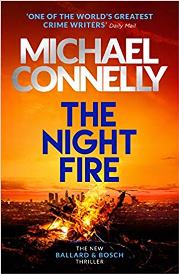
The latest Michael Connelly, The Night Fire, published by Orion, reached me too late to give it careful consideration, or even read it. It is, I am sure, very good, as most of Connelly’s previous thirty-three novels have been, irritating though that is to admit. (Is it really 26 years since I first read a Michael Connelly? Yes it is.)
The Night Fire, I do know, features Connelly’s legendary detective Harry Bosch and his more recent creations LAPD detective Renée Ballard and his ‘Lincoln Lawyer’ Mickey Haller. On that evidence alone I am happy to recommend it ‘sight unseen’. If you have not come across the work of Michael Connelly before (where have you been?), then simply take note of the words of Lee Child – who reads thrillers so you don’t have to – who called him ‘a superb natural storyteller’.

No one can doubt that crime writing in New Zealand is in a very healthy state, if one can describe such a wave of murder and mayhem as ‘healthy', and I hear that an anthology to celebrate the dark doings of Middle Earth will be published next year.
The latest Kiwi author to break through here is ex-policeman Nathan Blackwell with The Sound of Her Voice, published this month by Orion, which covers inter-linked cases over several years in the career of Auckland police detective Matt Buchanan. It is strong and powerful stuff clearly based on first-hand experience of police work; the author having served for ten years in the New Zealand police. I know policemen see terrible things and occasionally resort to rather off-colour language, but I’ve never come across such a casual sprinkling of f***ks and f***kings before, in both dialogue (permissible) and narrative (less so), with no less than 26 examples in the first 24 pages, the majority coming from the mouth or mind of the policeman narrator.
The author may well be making a point, but such liberal repetition can be fucking distracting.

Nicolás Obregón is a one-man crime-writing United Nations. Born in Britain to a Spanish father and a French mother (blame Brexit), and educated in London and Madrid, he became fascinated with Japan and the Japanese during his time as a travel writer, but finally settled in Los Angeles, where his central character, ex-cop Kosuke Iwata, has settled rather than face some personal demons back in his native Japan.
In Unknown Male, published by Penguin, when a young British student is murdered, Iwata is called back to Tokyo for the first time in ten years, on the eve of the Olympics to help with the case. One things leads to another, as they often do, and a disturbed female British detective is also assigned. The resulting investigation turns up more than you really ever want to know about the sordid underbelly of Tokyo life and also pits our heroine (for she quickly becomes that) in a life-or-death struggle with a serial killer who makes Hannibal Lecter look like a boy scout.
Not for the weak-of-stomach, but a gripping read, finely written.
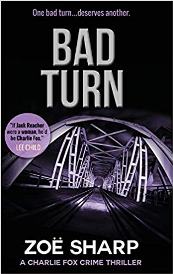
A novel I have yet to see, though I am looking forward to it, is Zoe Sharp’s Bad Turn, published by Zace Ltd., which is, I believe, the thirteenth case for Charlie Fox, probably the best female kick-ass character in the business.
Stop Press
A certain photograph in the popular press has recently been brought to my attention. It features a young female recruit to the Fire Brigade practising the traditional emergency call-out drill.

I am sure Miss Arcuri’s fellow firefighters on Red Watch welcome her addition to their ranks. Certainly her appointment and enthusiasm for training seems to have impressed the gentleman observing her, whoever he is.
But what struck my jaundiced eye was the figure behind Miss Arcuri. Modern technology (though why it is called ‘modern’ when it involves pixies is beyond me) has allowed a crude blow-up of that segment of the picture and I am more convinced than ever that it shows no other than Prince Ali Karim, the millionaire playboy who, for tax purposes, subsidises this very magazine.

Usually seen at only the highest of high societal events, one has to wonder what Prince Ali was doing hanging around fire stations…. I think we should be told.
Pip! Pip!
The Ripster.
|